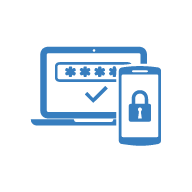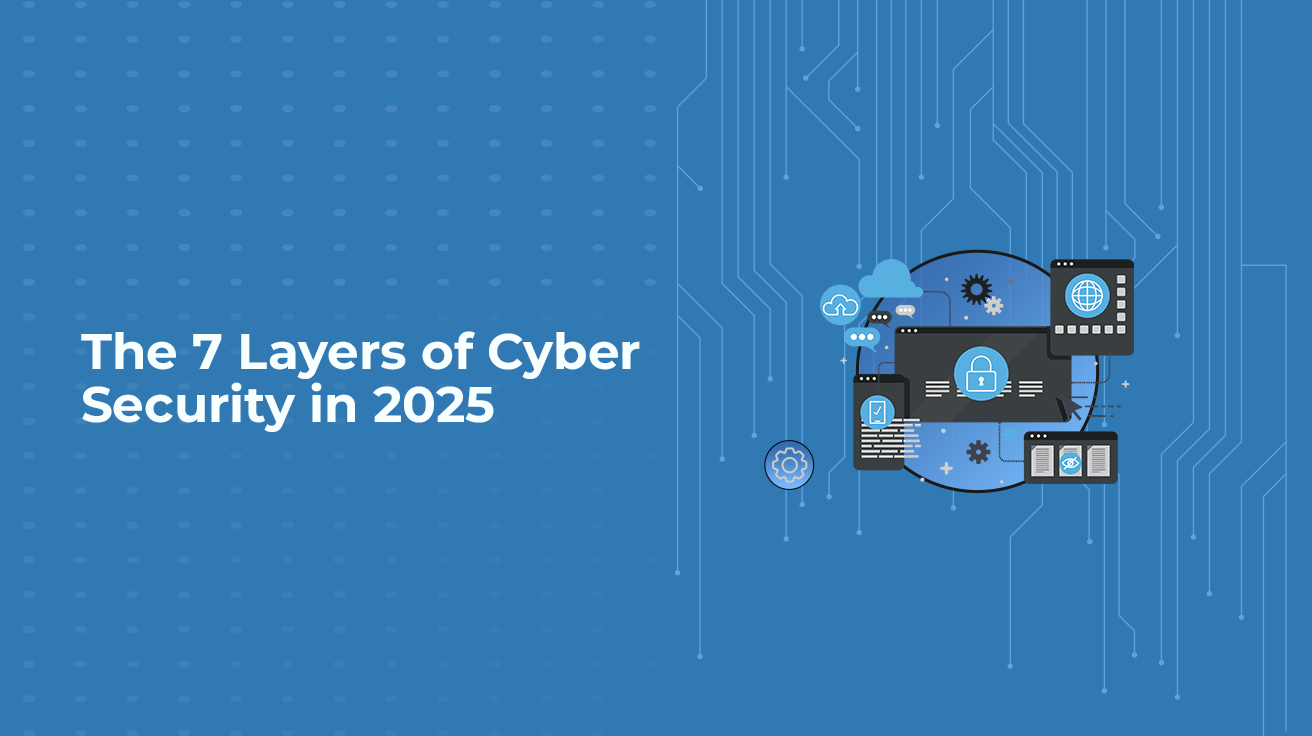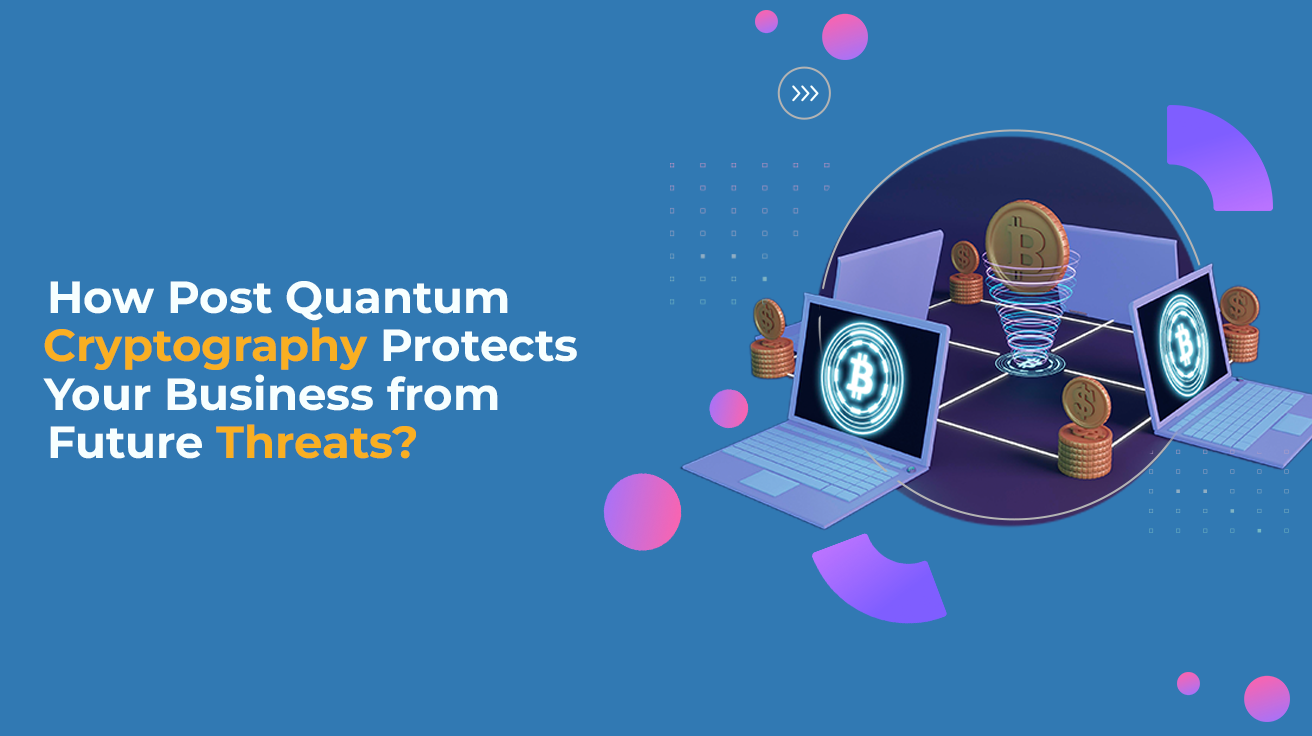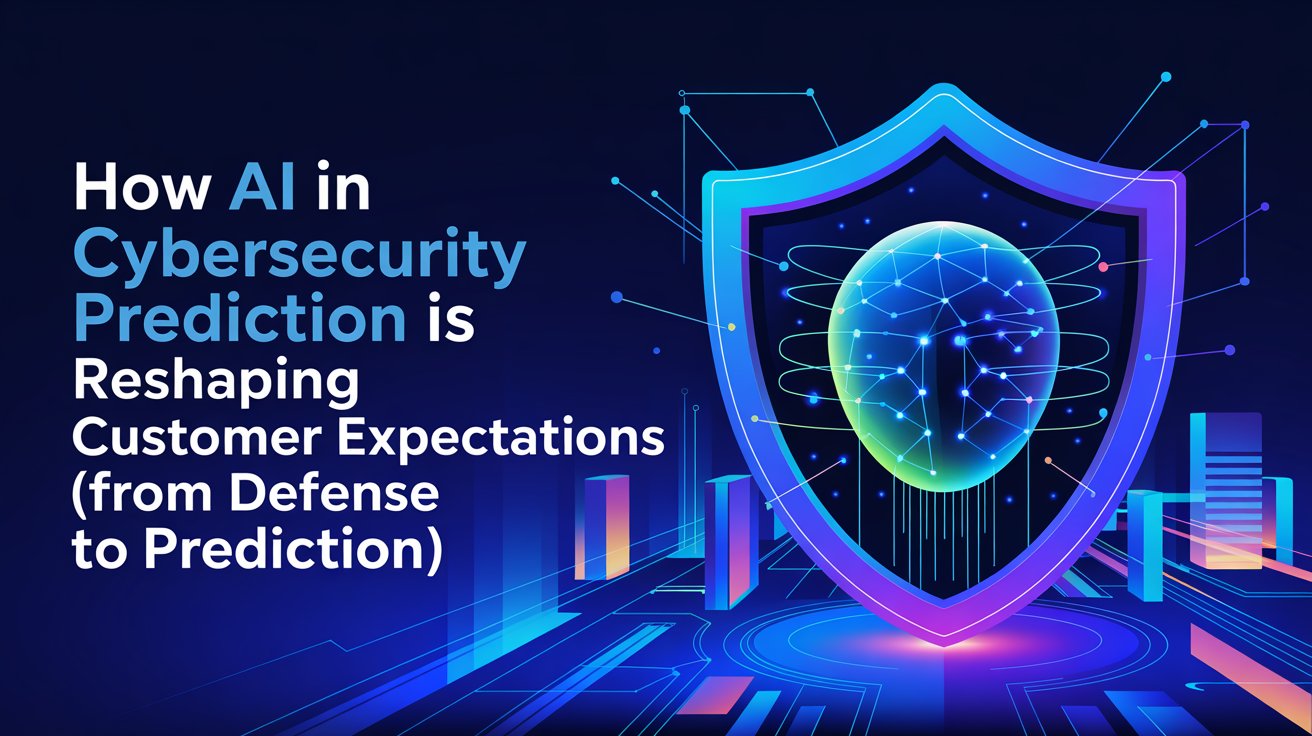May 20, 2025
•14 Min Read
The 7 Layers of Cyber Security in 2025
In 2025,
online safety is more critical than ever. Everyday, hackers discover new
strategies for invading phones, computers, and networks. If you are simply
checking email from home or operating a business with thousands of clients,
cybersecurity is not something that can be overlooked.
But one password
or antivirus program isn’t enough anymore. Cyber thieves have many different ways of committing their
crimes, i.e., phishing
emails
and malware. Besides
these, they can also use ransomware and fake Wi-Fi. To Prevent Such Attacks, at
least two layers of progress must be maintained.
That’s where
the 7
layers of cybersecurity come in.
Think of it
like building a strong wall around your house but with seven locked
doors. Even if
someone breaks through one, the others are there to stop them. Each layer
protects a different
part of your digital
life.
These layers
work together like a team. Some protect your computer. Some protect your
network. Others protect your data, your identity, and even your habits online.
This
multi-layered system is called defense in depth and it’s the smartest way to stay safe in a world full of digital
threats.
In this blog,
we’ll break down each layer in a simple way. You’ll learn what each one does,
why it matters, and how to make your own online world safer step by
step.
Let’s get
into the 7 layers of cybersecurity and build your digital armor.
1. Endpoint
Protection (EDR/XDR)
Every phone,
laptop, tablet, or computer that connects to your network is called an endpoint.
These devices
help you get your work done but they also open the door to cyberattacks.
Hackers see them as weak spots. They often target these devices first to sneak
into your systems and steal data.
So this is
why endpoint protection is among the most important aspects of an overall cyber
security program. It is products like Endpoint
Detection and Response (EDR) or Extended
Detection and Response (XDR) that provide constant monitoring of your devices.
They don't
merely block known dangers. They can detect unusual behavior, check it out, and
move quickly to prevent an attack before it can do harm. Some can even fix the
problem without human help.
This is what
makes EDR and XDR tools a must-have in 2025’s cyber threat landscape.
Now, let’s
look at the top
endpoint protection tools that are leading the way.
1.1. CrowdStrike
Falcon
Right now, CrowdStrike Falcon is among the best EDR solutions available on the market. It is
artificial intelligent in threat detection for earlier identification and
capture of criminals before they inflict harm to target assets. Fast, bright,
with clouds, it means there is no added weight on devices while running.
Strengths:
Cloud-native, fast response, great accuracy
Best
For: Large businesses needing high-level security
1.2. SentinelOne
Singularity
SentinelOne
Singularity
offers a powerful type of autonomous endpoint protection.
It doesn’t
just detect threats, it automatically reacts, often stopping ransomware or
other malware right away. It can even roll back systems to the state before the attack
happened.
Strengths:
Self-healing features, rollback ability, zero-day defense
Best
For: Companies that want automation and peace of mind
1.3. Microsoft
Defender for Endpoint
For
organizations that use Windows and Office 365 products, this is indeed a good
match. Microsoft
Defender
readily sits on top of these tools and offers great protection against viruses,
ransomware, phishing, and other types of security damages.
Strengths: Great for
Microsoft-based systems
Best
For: Businesses already using Microsoft products
1.4. Sophos
Intercept X
Sophos
Intercept X
stands out with its deep-learning AI.
It catches even the latest, sneakiest dangers and provides anti-ransomware protection, which is a necessity in today's online environment, particularly for small businesses.
Strengths: Intelligent AI, robust anti-ransomware capabilities
Best
For: Small to mid-sized businesses on a budget
Your devices
are the front
line of your cybersecurity defense. If even one gets hacked,
your whole network could be at risk. So, choosing the right endpoint protection
tool isn’t just a good idea, it’s non-negotiable in 2025.
2. Network
Security (Firewalls)
Think of your
network like a house. It has doors, windows, and rooms filled with important
stuff. Now imagine if you left that house wide open.
Anyone could
walk in and take what they want. That’s what can happen to your network
if you don’t protect it.
This is where
network
security acts like strong doors and locks to keep bad guys out.
One of the most powerful tools for network safety is the firewall.
A firewall watches
traffic coming in and going out.
It checks
every request, every file, and every action. If something looks dangerous, the
firewall blocks it. And just like a security guard telling you, "You can't
come in here."
Cyberattacks
in 2025 are quicker and smarter. You require a next-generation firewall (NGFW)
that is capable of blocking websites but can do so much more. It needs to stop
malware, detect hidden threats, and respond quickly.
Here are the top firewall
tools keeping businesses safe this year.
2.1. Palo
Alto Networks
Palo Alto is a big
name in next-gen
firewalls.
Their systems
do more than just block bad traffic, they analyze everything in real-time,
hunting for signs of trouble.
They’re
perfect for big companies that need tight, smart security across large
networks.
Strengths: Smart
threat detection, real-time blocking, great analytics
Best
For: Large businesses with complex systems
2.2. Fortinet
FortiGate
FortiGate is known for
being strong and
affordable.
It gives you
powerful protection without breaking the bank. Many schools and
hospitals trust FortiGate because it’s easy to use and keeps
data safe.
Plus, it
works well even when you grow your network.
Strengths: Low cost,
easy setup, great for growing teams
Best
For: Small to mid-sized businesses, healthcare, education
2.3. Check
Point
Check Point employs a bodyguard who anticipates attacks even before they happen. It features zero-day security, which means it can defend against threats that have never been encountered. This capability is extremely useful for governments, banks, and large corporations with sensitive information.
Strengths:
Best-in-class zero-day defense, strong central control
Best
For: Enterprises with high-security needs
2.4. Cisco
Firepower
If your
business already uses Cisco tools, then Cisco
Firepower
fits right in.
It connects
smoothly with other Cisco software, so your team doesn’t have to learn new
systems. Firepower watches your traffic in real time and reacts fast if
anything bad happens.
Strengths: Seamless
with Cisco tools, strong live threat detection
Best
For: Businesses utilizing the Cisco ecosystem
Your
network is the core of your business. It brings your people, your information,
and your tools together. If it's not protected, everything else is at risk.
Selecting
the best firewall is a matter of selecting the best shield. It is your initial
defense wall and the wiser shield you have, the safer you become.
3. Security
Information & Event Management (SIEM)
Consider a time when your network is a gigantic mall where thousands of
things take place daily, some of which are good while others are rather
suspicious.
Now think
about this: Who’s watching it all? Who’s writing everything down, looking for
danger, and sounding the alarm when something goes wrong?
This is
precisely the purpose of SIEM - Security
Information and Event Management Security as if hired security guards and
smart cameras were working round the clock.
These tools
collect anything from the very definition of your network part. Every login,
every click, every error gets recorded. But they don’t just collect data. They
also analyze
it to find anything strange or unsafe.
This helps
your security team act fast before things get worse.
Another big
reason to use a SIEM is Compliance. If you work in finance, health or
e-commerce, you have to follow strict compliance regulations.
SIEM tools
generate security event logs which serve as evidence for lawful compliance.
Protecting the company from potential legal implication while trust-building
bases for the customers.
2025, with
increased cyber threats to businesses. Firewalls and antivirus wouldn't be
sufficient, the time of smart tools such as SIEM emerged, where intelligence
gives a complete picture in real-time.
For now,
check out this year's top SIEM tools taking the front stage.
4. Identity and Access Management (IAM & MFA)
Think for a
second your business is a house. Now ask yourself, who has the keys?
That is
basically what IAM is all about. It really does provide control over who comes
in, where they go, and what they can do within your network.
That's the
reason Cloud Security is needed in 2025.
With more
people working online, businesses are at greater risk of hackers breaking in
using stolen passwords. This is where IAM tools make sure only the
right people can get into your systems, apps, and sensitive
data.
But what if
someone guesses or steals a password? That’s why we need Multi-Factor Authentication (MFA) too. It adds a second lock, like
a text message code or a fingerprint. So even if hackers get the password, they
still can’t get in.
Together, IAM and MFA create a
strong wall of protection. They not only stop intruders but also help track and
log every login and permission change. This helps with compliance, security audits, and protecting
customer trust.
In 2025, with
so many devices and accounts in use, IAM and MFA are must-haves
for every business, big or small.
5. Cloud
Security
In 2025, cloud security will become a
burning issue and will not remain an optional service for reducing risk in the
cloud. Businesses that agree to stipulate most of their office work to
third-party vendors have also signed the agreement to do continuous data
leakages with the time of IT-induced disasters.
Cloud environments are resourceful and
elastic but can become victims of misconfigured settings, unauthorized access,
and data theft without proper and solid security measures. Cloud security is
about ensuring cloud infrastructure, protecting data, workloads, and
applications and not letting any threat surface, external or internal.
Here are the
leading cloud security solutions for 2025.
5.1.
Prisma Cloud from Palo Alto Networks
Prisma Cloud delivers
deep visibility and comprehensive security postures for applications,
workloads, and complete cloud infrastructure. It is multi-cloud and detects
misconfigurations, vulnerabilities, and compliance breaches.
·
Strengths: Full-stack
cloud-native security.
·
Ideal For: Enterprises
managing multiple cloud providers.
5.2. AWS Security Hub
When you are
within AWS, the AWS Security
Hub
offers the best unified view of your security alerts and your compliance
status. It integrates with other AWS services and third-party tools for a
centralized security management system.
·
Strengths: Seamless
AWS integration, automated compliance checks.
·
Ideal For: Businesses
using AWS infrastructure.
5.3. Microsoft Defender for Cloud
This is Microsoft’s
integrated cloud-native application protection platform (CNAPP). It assesses and enhances the security posture of your Azure, AWS,
and Google Cloud environments.
·
Strong
point:
Multicloud support, threat detection, and regulatory compliance.
·
Ideal For: Businesses
already using Microsoft services.
5.4. Lacework
Lacework provides behavior-based
anomaly detection across cloud environments. It’s designed to
detect and alert on unexpected behaviors in your workloads, containers, and
Kubernetes clusters.
·
Strengths: Fast
deployment, and effective anomaly detection.
·
Ideal For: Teams
running containerized workloads or Kubernetes.
6. Email
& Web Security
Most
cyberattacks begin with a phishing email or a malicious
website, so email and web security are non-negotiable layers. Attackers now use such deceptive emails to steal credentials, distribute
malware, or trick the user into giving away sensitive information. A strong
defense here protects both your users and your data.
Top Email
& Web Security Tools for 2025
6.1. Proofpoint
Proofpoint is a leader in email security. It captures and analyzes AI-driven
threat intelligence to detect block phishing, business email compromise (BEC),
and ransomware attempt before they reach the inbox.
·
Strengths: Advanced
phishing protection; URL scanning happens in real-time.
·
Ideal For: Large
businesses needing granular protection.
6.2. Mimecast
Mimecast has solid email security, continuity, and archiving. It prevents
email threats and protects against brand impersonation and all email continuity
in the case of outages.
·
Strengths: Undeterred
threat protection, high uptime.
·
Best
For:
Businesses that want on-board email security.
6.3. Cisco Umbrella
Cisco Umbrella is a cloud-based web security platform that provides secure
access to the internet and blocks user attempts to enter malicious sites, even
before there is a connection to such sites.
·
Strengths: Protection
at DNS level, malware blocking.
·
Ideal For:
Organizations needing fast, effective web filtering.
6.4. Google Workspace + Microsoft 365 Security
Both Google
Workspace and Microsoft 365 provide spam filtering, malware scanning, and
phishing detection out of the box. When properly tuned, they can provide
excellent native protection, especially in smaller organizations.
·
Strengths: Seamless
integration with daily communication tools.
·
Ideal For: SMBs using
these productivity suites.
7. User
Awareness Training (The Human Firewall)
You can have
the best security software in the world. Firewalls. Encryption. Multi-layered
systems.
But without
the right training, even smart employees can fall for simple tricks.
Hackers know this. This is where most cyber-attacks begin, phishing emails or
social engineering.
Through
ongoing training, your staff can learn to spot and stop such attacks before any
harm is done.
What
does cybersecurity training teach?
User awareness
training helps your team:
·
Spot fake emails pretending
to be from banks, coworkers, or trusted companies.
·
Make strong passwords &
don't reuse passwords.
·
Recognize social
engineering tricks like fake calls or urgent messages
·
Follow smart data sharing
rules
to keep sensitive info safe
·
Know how to report
security issues the right way
Even short
monthly sessions or quick quizzes can make a big difference.
The aim is not making employees techies but keeping them awake and ensuring
they take safety measures daily.
Why
it matters more in 2025
Cyber threats
are getting more advanced. But at the same time, remote work, BYOD policies,
and cloud systems make users more exposed than ever.
That’s why cybersecurity
for employees is no longer optional. It’s part of every smart
business strategy.
When people
know what to look for, they act faster.
-They ask questions.
-They avoid risky clicks.
-And they protect your company, without even realizing it.
Top Training Platforms for 2025
7.1. KnowBe4
This training
has all fun ways from KnowBe4, thus
including an interactive course, phishing simulations, and extensive reporting.
Their content is engaging, frequently updated and designed to foster a
security-first mindset.
·
Strengths: Realistic
phishing simulations, huge training library.
·
Ideal For:
Organizations of all sizes.
7.2. Infosec IQ
The infosec IQ also caters to role-based training and phishing simulations. It
helps create personalized learning pathways and can be customized based on your
specific threat profile for your organization.
·
Strengths:
Customizable training paths, compliance focus.
·
Ideal For: Regulated
industries (healthcare, finance, etc.).
9 How to
Combine These Layers for Maximum Protection
Each
cybersecurity layer plays a unique role, but they’re most powerful when used together.
| Layer | Functions | Tools |
| Endpoint Security | Protects devices from malware and ransomware | CrowdStrike, SentinelOne, Eset |
| Network Security | Defends network perimeter, filters traffic | Palo Alto, FortiGate |
| SIEM | Monitors and analyzes all activity | Splunk, SentinelOne |
| IAM & MFA | Ensures only the right people have access | Okta, Duo |
| Cloud Security | Secures apps and data in the cloud | Prisma Cloud, AWS Security Hub |
| Email & Web Security | Stops phishing and malicious links | Proofpoint, Mimecast |
| User Training | Educates users to avoid human errors | KnowBe4, Infosec IQ |
Here's how to
build your complete defense-in-depth strategy:
By
integrating tools across these layers and ensuring that every person,
device, and entry point is covered, you create a cybersecurity
posture that is proactive, not reactive.
Also
consider:
·
Regular
audits
to assess vulnerabilities
·
Incident
response plans to act fast during a breach
·
Backups to ensure
data is recoverable in case of ransomware
The digital world
in 2025 is full of amazing tools, smart systems, and endless
opportunities. But with that comes serious danger because cybercriminals are smarter
than ever.
That's why
even such a strong password isn't enough these days. This is like locking the
front door but leaving wide-open windows. Instead, best practice is multiple
layers of cybersecurity for everyone.
Each layer
helps cover the gaps of another. And together, they build a strong wall around
your data, devices, and users.
This layered
defense strategy gives you the strength to face modern threats.
Whether you are building a small startup or running a big company or just
managing your personal accounts-they will be your blueprint to remain secure.
So, look at
your current cybersecurity setup. Find the weak spots. And start filling those
gaps today.
Because in 2025, cybersecurity isn’t just smart, it’s your digital survival kit.

Abid Qureshi























